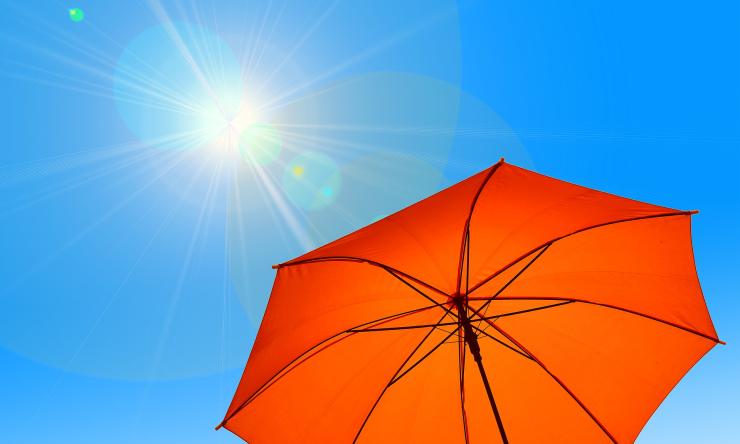Recognizing the stages of heat illness
Heat illness comes in different stages, with heat stroke being the most severe and dangerous of them all. A Baylor College of Medicine expert provides information on how to recognize the progression of heat illness to keep you safe while enjoying outdoor activities during the hot summer months.
“Heat illness tends to happen when the body is unable to regulate its temperature due to overexertion or extended periods of time in high temperatures,” said Dr. Mike Ren, assistant professor of family and community medicine at Baylor. “Conditions can range from mild discomfort to life threatening.”
Heat cramps are the initial sign of heat illness. Cramps and spasms will occur due to dehydration or an electrolyte imbalance, and if not attended to, can progress to heat exhaustion. During heat exhaustion, a person will experience fever, heavy sweating, weakness, dizziness, headache or nausea.
At this stage, it is also possible for people to experience heat syncope – a fainting or dizziness episode triggered by a decreased blood flow to the brain due to standing for long periods in high heat or quickly rising from the sitting or lying position in a hot environment. Without care, heat exhaustion progresses to heat stroke.
Heatstroke is a life-threatening condition that occurs when the body’s temperature rises rapidly above 104°F and the body can no longer control its temperature and is unable to cool down. In serious cases, heat stroke can lead to seizures or loss of consciousness. Heatstroke requires emergency treatment. Untreated heatstroke can quickly damage your brain, heart, kidneys and muscles.
Fortunately, once the symptoms of heat illness are recognized, there are simple tactics to prevent it from advancing. When heat cramps begin to set in, Ren says to stop any physical activity and move to a cool place inside and air-conditioned, if possible. Fan the skin to cool it down and begin to hydrate. If you suspect someone is experiencing heat exhaustion, move them to a cool place and try to bring the body temperature down. If the person cannot keep fluids down or if you believe the person is experiencing a heat stroke, call emergency medical services immediately. While waiting for paramedics to arrive, try to place ice packs in the arm pit, groin, neck and back areas.
If planning to spend excess time in the heat, Ren encourages people to be proactive in combating heat illness:
- Wear lightweight, loose-fitting and light-colored clothing.
- Drink lots of water, remembering that it is possible to be dehydrated even if you are not thirsty.
- In addition to water, our body needs electrolytes. Choose an electrolyte drink or solution that’s low in sugar like sports drinks or powder-based electrolyte additives.
- Avoid alcohol, caffeine, and very sugary drinks—they can dehydrate you.
- Try to plan your activities during the morning and evening when temperatures are cooler. Limit outdoor activities during the hottest part of the day (1-4 p.m.).
- Take breaks every 15 to 20 minutes, away from the sun or heat.
- Wear sunscreen because sunburned skin can impair the body’s ability to cool itself.
- Protect your eyes with a hat and sunglasses.
- Gradually acclimate to the heat if you're just starting to work or exercise outdoors.
- If you are working outside in the heat, use the buddy system in case you encounter heat illness.
“Children, elderly individuals and those with chronic conditions that hinder the body’s ability to cool itself are at a higher risk of heat illness,” Ren said. “Children spending lots of time in the sun also may experience heat rash, which happens when sweat ducts get clogged and small bumps or blisters form. Treat this by keeping the affected area dry, cool and undisturbed. If you are 65 years of age or older, have a friend or relative call to check on you twice a day during a heat wave.”
In addition to individual preventative measures, Ren encourages communities to provide safe environments for people to enjoy outdoor activities during the summer months. Parks and outdoor spaces with lots of shaded areas minimize the amount of time spent in direct heat and cooling centers assist families without access to consistent air conditioning. Ren also encourages people to be aware of communal air monitoring systems that provide reports on air quality, pollution and ozone levels as they can provide information for people with respiratory issues.
“Access to these kinds of environments and resources can reduce the amount of heat related illnesses, so it’s important for people to be aware of these things to stay safe and healthy in hotter months,” Ren said.










